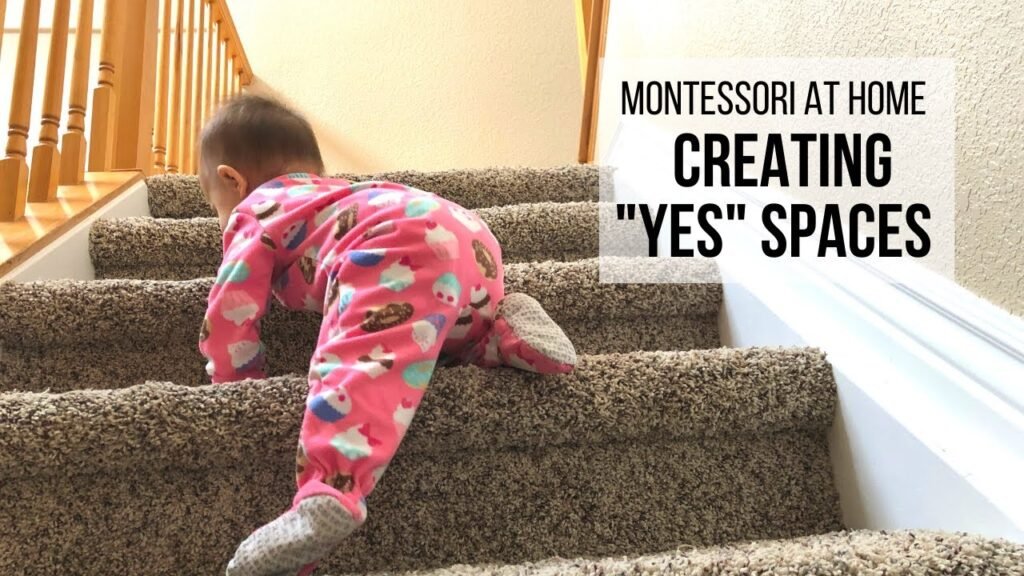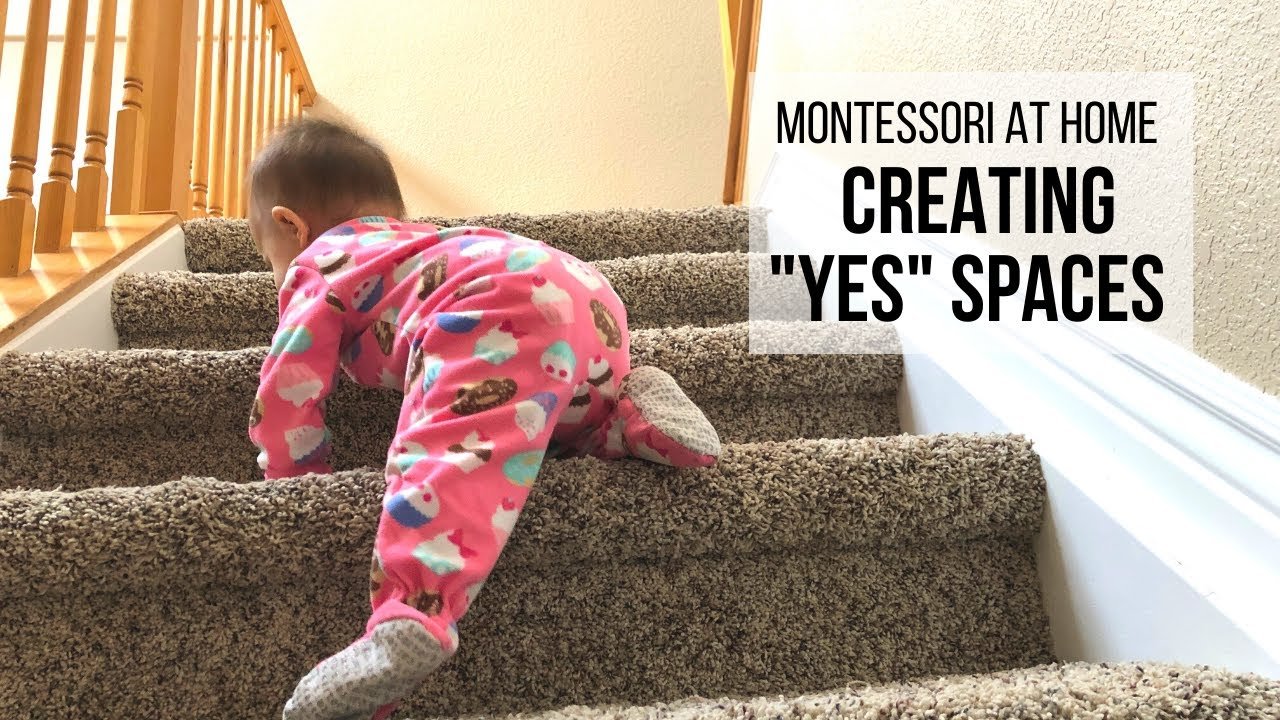Hi there! If you’re looking to create a safe and independent Montessori environment for your child at home, you’ve come to the right place! In this video by Hapa Family, Ashley shares her personal babyproofing strategies to encourage confidence and exploration in children. From creating “Yes” spaces to baby proofing different areas of the home, Ashley provides valuable tips and recommendations to help your little one safely navigate their environment. Whether it’s setting up a Montessori wardrobe for your child or teaching them to be gentle with pets, this video is filled with helpful insights on creating a secure and independent space for your child.
Join Ashley, a mom of two adorable girls, Kylie and Mia, as she walks you through her home and offers practical advice on babyproofing for safety. From addressing electrical outlets to securing furniture pieces, Ashley shares simple yet effective ways to ensure your child’s environment is free from hazards. With a focus on encouraging independence and confidence, Ashley’s insights on creating a safe Montessori environment at home will guide you in making your space a secure and nurturing place for your little one to thrive.
Setting Up a Safe Montessori Environment
When creating a Montessori environment at home, one of the essential elements is designating Yes Spaces where your child can explore safely and independently. Babyproofing your home is crucial to ensure your child’s safety, especially in areas where they are left unsupervised. Additionally, creating a Montessori wardrobe for your children can contribute to their independence and organizational skills.
Designating Yes Spaces in the Home
Defining What Yes Spaces Are
Yes Spaces are designated areas in your home where your child can freely explore and play without constant supervision. These spaces are childproofed and contain age-appropriate toys and activities for your child to engage with independently.
Benefits of Yes Spaces for Children
Yes Spaces provide children with a sense of autonomy and independence, allowing them to explore their surroundings safely. By creating these spaces, children can develop confidence, decision-making skills, and a sense of responsibility for their environment.
Tips for Setting Up Yes Spaces in Different Areas of the Home
When setting up Yes Spaces in your home, consider the specific needs and interests of your child. Be sure to childproof the area by securing furniture, covering electrical outlets, and removing any potential hazards. Rotate toys and activities regularly to keep the space fresh and engaging for your child.
Babyproofing Strategies for Safety
Identifying Potential Hazards in the Home
Before babyproofing your home, identify potential hazards such as sharp corners, electrical outlets, and unstable furniture. Addressing these hazards is crucial to creating a safe environment for your child to explore independently.
Tips for Babyproofing Bedrooms, Bathrooms, and Living Rooms
In bedrooms, secure furniture to the wall to prevent tip-overs and use corner guards to protect against sharp edges. In bathrooms, lock cabinets containing cleaning products and install toilet locks to prevent drowning hazards. In living rooms, cover electrical outlets, secure cords, and anchor heavy furniture to prevent accidents.
Childproofing Electrical Outlets, Cabinets, and Furniture
Childproofing your home involves installing outlet covers, cabinet locks, and furniture straps to prevent accidents. Keep dangerous items out of reach and secure heavy furniture to the wall to avoid tipping. By implementing these safety measures, you can create a secure environment for your child to explore.

Creating a Montessori Wardrobe for Children
Benefits of a Child-Friendly Wardrobe
A Montessori wardrobe allows children to access and choose their clothes independently, promoting a sense of responsibility and self-reliance. By organizing clothes and toys in a child-friendly manner, children can develop practical life skills and foster a sense of order.
DIY Ideas for Organizing Clothes and Toys
Use low shelves or drawers that your child can easily reach to store clothes and toys. Label containers with pictures or words to promote literacy and independence. Encourage your child to select their clothing each day, promoting decision-making and autonomy.
Choosing Safe and Functional Furniture for a Child’s Room
Select furniture that is sturdy, safe, and child-friendly, such as low beds, child-sized chairs, and non-toxic materials. Ensure furniture is anchored to the wall to prevent tipping and avoid sharp edges or corners that could pose a risk to your child. By choosing functional and safe furniture, you can create a nurturing environment for your child.
Furnishing a Montessori Home with Child-Safe Items
Using Child-Safe Furniture and Decor
Choose furniture and decor that is safe and age-appropriate for your child, such as soft rugs, non-toxic paint, and child-sized tables and chairs. Avoid items that pose a choking hazard or have sharp edges. Create a cozy and inviting space for your child to explore and play safely.
Benefits of Childproofing Mirrors and Wall Art
Childproof mirrors by using shatterproof glass or acrylic mirrors mounted securely to the wall. Hang wall art out of reach of children to prevent accidents. By childproofing mirrors and wall art, you can enhance the safety of your child’s environment.
Selecting Developmentally-Appropriate Toys for Children
Choose toys that promote creativity, sensory exploration, and problem-solving skills. Select toys made of safe, non-toxic materials and avoid toys with small parts that could be swallowed. By providing developmentally-appropriate toys, you can support your child’s cognitive and motor skill development.
Teaching Children to Interact Safely with Pets
Importance of Teaching Children to Be Gentle with Pets
Teaching children to interact respectfully and gently with pets is essential for their safety and well-being. Children should be taught to approach animals calmly, avoid aggressive behavior, and respect their boundaries.
Redirecting Aggressive Behavior towards Pets
If a child exhibits aggressive behavior towards pets, it is important to redirect their actions positively. Teach children how to pet animals gently, use soft voices, and avoid actions that may scare or harm pets. By redirecting aggressive behavior, you can foster a positive relationship between children and pets.
Encouraging Respectful Interactions between Children and Pets
Encouraging children to interact respectfully and kindly with pets promotes empathy, compassion, and responsibility. Supervise interactions between children and pets, teach children how to care for pets, and model gentle behavior. By fostering respectful interactions, you can create a harmonious environment for both children and pets.
Incorporating Montessori Principles in Daily Routines
Benefits of Following Montessori Principles at Home
Implementing Montessori principles in daily routines promotes independence, self-discipline, and life skills in children. By encouraging children to engage in practical activities, make choices, and take on responsibilities, parents can empower children to become confident and capable individuals.
Applying Montessori Concepts in Daily Activities
Incorporate Montessori concepts such as child-led learning, hands-on activities, and practical life skills into daily routines. Encourage children to participate in household tasks, make decisions, and solve problems independently. By applying Montessori principles, you can nurture your child’s intellectual, emotional, and social development.
Encouraging Independence and Self-Discipline in Children
Encourage children to engage in tasks independently, make choices, and take responsibility for their actions. Provide opportunities for children to practice self-care routines, help with chores, and make decisions throughout the day. By promoting independence and self-discipline, you can support your child’s growth and development.
Providing Educational Resources for Children
Recommendations for Reading Materials for Children
Offer a variety of age-appropriate books, magazines, and reading materials to foster a love of reading in children. Encourage children to explore different genres, authors, and topics to develop their literacy skills and imagination. By providing reading materials, you can inspire a lifelong love of learning in your child.
Using Audio and Video Gear for Learning
Utilize audio and video gear to enhance children’s learning experiences and engage their senses. Play educational audiobooks, music, and videos that promote cognitive development, creativity, and language skills. By incorporating audio and video gear into learning activities, you can create a dynamic and interactive learning environment for your child.
Benefits of Music in a Child’s Development
Music plays a vital role in children’s development, stimulating cognitive, emotional, and social growth. Expose children to a variety of musical genres, instruments, and sounds to promote creativity and musical appreciation. By incorporating music into daily routines, you can enhance your child’s learning experience and emotional well-being.
Engaging with Hapa Family on Social Media
Accessing Social Media Links for Further Engagement
Connect with the Hapa Family on social media platforms to access additional resources, tips, and content related to Montessori parenting. Follow their Instagram account and engage with other Montessori families online to share experiences and learn new strategies for creating a safe and nurturing environment for children.
Connecting with Other Montessori Families Online
Join online communities of Montessori families to connect, share ideas, and support each other in your parenting journey. Engage in discussions, ask questions, and collaborate with like-minded parents who are committed to implementing Montessori principles in their homes. By connecting with other Montessori families, you can gain valuable insights and inspiration for creating a supportive environment for your child.
Participating in Live Q&A Sessions with Ashley
Participate in live Q&A sessions with Ashley from Hapa Family to ask questions, seek advice, and connect with other parents. Gain first-hand knowledge and practical tips on creating a Montessori environment at home, implementing child-safe practices, and promoting independence and safety for children. By engaging with Ashley and other parents, you can learn new strategies and receive support in your parenting journey.
Conclusion
In conclusion, implementing Montessori principles in your home can create a safe and nurturing environment for your child to explore, learn, and grow. By designating Yes Spaces, babyproofing your home, and creating a child-friendly wardrobe, you can promote independence, safety, and confidence in your child. Teach your child to interact safely with pets, incorporate Montessori principles in daily routines, and provide educational resources to support their development. Engage with the Hapa Family on social media, connect with other Montessori families online, and participate in live Q&A sessions to enhance your parenting journey. By following these key strategies, you can create a harmonious and enriching environment for your child to thrive.

